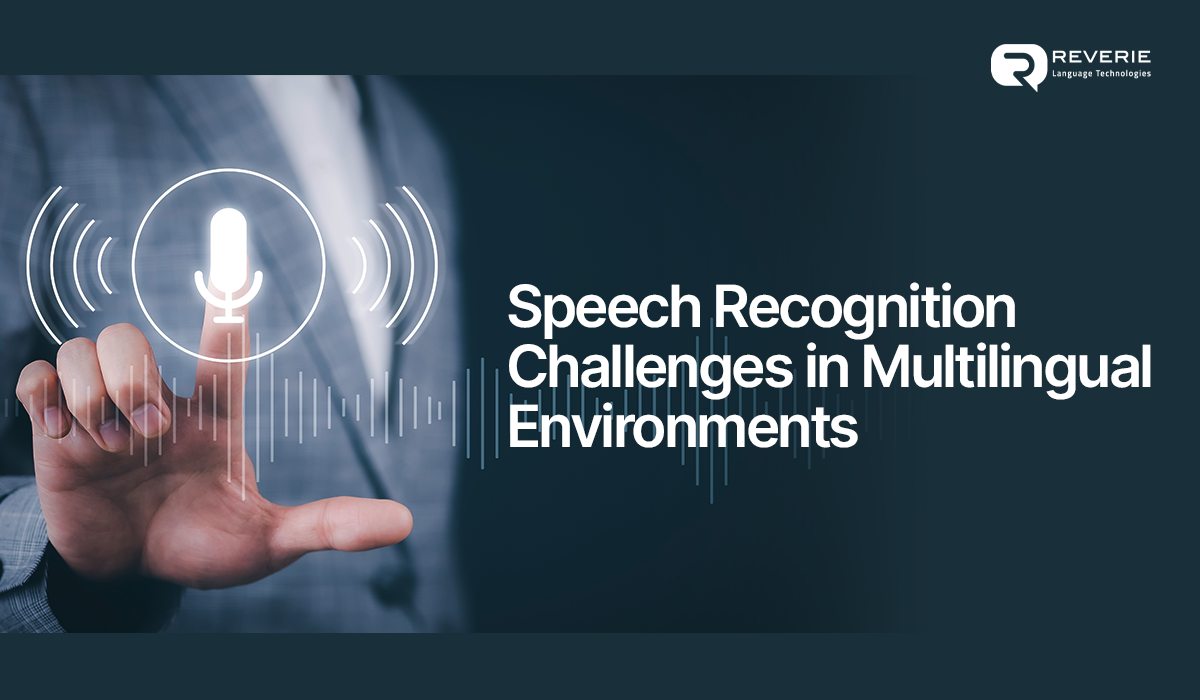Speech recognition is becoming a part of our daily lives, be it in the form of voice assistants or in the form of voice-controlled devices. It’s here, and it will be there for the foreseeable future with reports suggesting a CAGR of 14.25% from 2024 to 20230 in the market size of speech recognition. That means, the market is going to be worth $563.30 million by 2030.
Whether you are looking for your favourite regional song using your voice assistant or using it to search for information in your native language on the web, you would expect it to understand your command accurately and to provide you with the results in your language.
However, even after significant advancements in fields like generative artificial intelligence (AI), voice biometrics, and more, businesses in India still tussle with various speech recognition challenges. India has a multilingual population with over 22 official languages and thousands of dialects, which can often make it difficult for businesses to reach out to their target audience in their preferred language. Let’s discuss the challenges in speech recognition in multilingual environments and how businesses can overcome them.
Understanding Speech Recognition Technology
Speech recognition, also referred to as automatic speech recognition (ASR), is a technology that converts human speech into text. It leverages artificial intelligence (AI), machine learning, and natural language processing (NLP) to interpret human spoken words into readable text.
Despite a few speech recognition challenges in multilingual environments, the applications of this technology span across industries like healthcare, education, e-commerce, and customer service. Think of the convenience it brings: virtual assistants that respond to your commands, automated customer support, and real-time transcription services.
The Internet penetration in India has grown significantly over the past few years, rising from just 14% in 2014 to more than 52% in 2024. In India, the potential is enormous. Voice-enabled apps are changing how people shop, bank, and even access government services. This surge has put speech recognition at the centre of a technological revolution. However, the path isn’t smooth.
Indian users, particularly from rural areas, often mix languages, accents, and idioms, presenting unique challenges for these systems. There’s a silver lining, though – understanding these challenges can open a world of new opportunities for businesses to design better systems that resonate with Indian consumers.
Challenges in Speech Recognition within Multilingual Environments
Speech recognition may seem magical, but behind the curtain, it’s a constant battle against linguistic intricacies. In India, the challenges are amplified by the unique diversity of the spoken word.
1. Linguistic Diversity
India’s linguistic ecosystem is like a kaleidoscope—beautiful but complex. With multiple languages and thousands of dialects, each region has its own unique way of speaking. Each language has its own grammar, syntax, and phonetics, which makes this linguistic diversity one of the biggest challenges of speech recognition. A speech recognition model trained in English might fail miserably with Bengali or Kannada.
The sheer volume of languages makes building a universal model a Herculean task. Unlike global markets, speech recognition systems here must cater to a mosaic of tongues, ranging from Hindi and Tamil to Kannada and Gujarati.
2. Dialectal Variations and Regional Accents
Even within the same language, accents can drastically differ. Consider the word “Namaste.” A speaker from Jaipur might pronounce it differently than someone from Lucknow. These subtle variations often confuse AI and can trip up even the most advanced systems, leading to errors in transcription. Let’s recall an old aphorism: “कोस-कोस पर बदले पानी, चार कोस पर बानी,” which means that India’s languages change every few kilometres, like the taste of the water. The popular aphorism paints the perfect picture of India’s linguistic landscape.
3. Lack of Data for Low-Resource Languages
AI thrives on data, but many Indian languages lack sufficient digital resources. While English and Hindi enjoy robust datasets, languages like Bhojpuri or Khasi remain underrepresented. They are classified as “low-resource” because there’s minimal high-quality speech data available for them. Without this data, speech recognition systems struggle to understand or even recognise these languages.
4. Code-Switching Phenomenon
Have you ever switched between languages mid-sentence? Most Indians do. A typical sentence could include words from Hindi, English, and a local dialect. This is called code-switching, and it’s deeply embedded in our communication style. This is one of the biggest speech recognition challenges. Speech recognition systems are often trained in one language at a time, making code-switching a significant hurdle, as they struggle to adapt to this fluidity, often leading to inaccurate outputs.
5. Noise and Environmental Factors
India is noisy—whether it’s the bustling streets of Mumbai or the cacophony of a crowded Delhi market. For speech recognition systems, this background noise is like static on a radio, disrupting the clarity of the spoken command. Background noise and overlapping speech make it harder for systems to differentiate between intended commands and ambient sounds.
How Do Speech Recognition Challenges Impact Indian Businesses?
Picture this: You’re an e-commerce brand, and your customers are using voice search to find products in Hindi. But if your system doesn’t understand their accents or mixes up words, they’ll leave your platform in frustration.
Speech recognition errors can lead to lost customers, lower satisfaction, and missed opportunities. Whether it’s multilingual chatbots in customer support or voice-enabled search in retail, businesses need speech recognition tools that cater to every voice, accent, and language. Ignoring this could mean losing out on millions of potential customers.
Strategies to Overcome Speech Recognition Challenges
Overcoming these hurdles isn’t impossible – it just needs the right approach. Here are some actionable strategies for businesses to consider:
1. Build AI Models That Speak India’s Language(s)
AI-powered tools can be trained in India-specific languages and dialects, making them more inclusive. Customisation is key to handling accents, hybrid sentences, and regional nuances.
2. Create Robust Regional Language Datasets
Partner with linguists, universities, and the government to build comprehensive datasets for low-resource languages. Annotating speech data for lesser-known dialects can significantly boost accuracy.
3. Reduce the Noise—Literally
Advanced noise-reduction technologies can filter out background sounds, making speech recognition tools more effective in India’s chaotic environments.
4. Adapt to Accents and Dialects Like a Local
Localised training is critical. Continuously refine speech models using real-world user data to capture how Indians actually speak, not just textbook versions of language.
5. Encourage User Feedback Loops
Who better to help refine your speech recognition system than the users themselves? Collect feedback to identify gaps in performance and fine-tune your tools.
6. Collaborate for Success
Work with academic institutions, tech experts, and linguists to develop speech recognition systems tailored to India. Collective effort is the fastest way to bridge language barriers.
The Road Ahead
India’s multilingualism isn’t just a challenge – it’s an opportunity to innovate. By building smarter AI models, gathering better data, and addressing regional nuances, speech recognition technology can become a powerful ally in India’s digital revolution.
For businesses, investing in these tools isn’t just about keeping up with the competition—it’s about creating meaningful connections with customers in the languages they love. Ready to take the leap into India’s voice-first future? Book a demo with Reverie and see how our tools can transform your customer experience.
Faqs
What is speech recognition technology?
Technology that converts spoken words into text, enabling voice-activated services and applications.
Why is speech recognition challenging in India?
India’s diverse languages, dialects, and accents complicate the creation of universally accurate recognition systems.
How can noise reduction improve speech recognition?
Noise reduction filters out background sounds, ensuring the system focuses on the user’s voice, leading to better accuracy.
What role do regional datasets play in speech recognition?
Regional datasets provide training material for AI systems, enabling them to recognise and understand lesser-known languages.
Are there speech recognition tools designed for India?
Yes, tools like Reverie’s Speech-to-Text API are specifically designed to handle Indian languages and their unique complexities.


